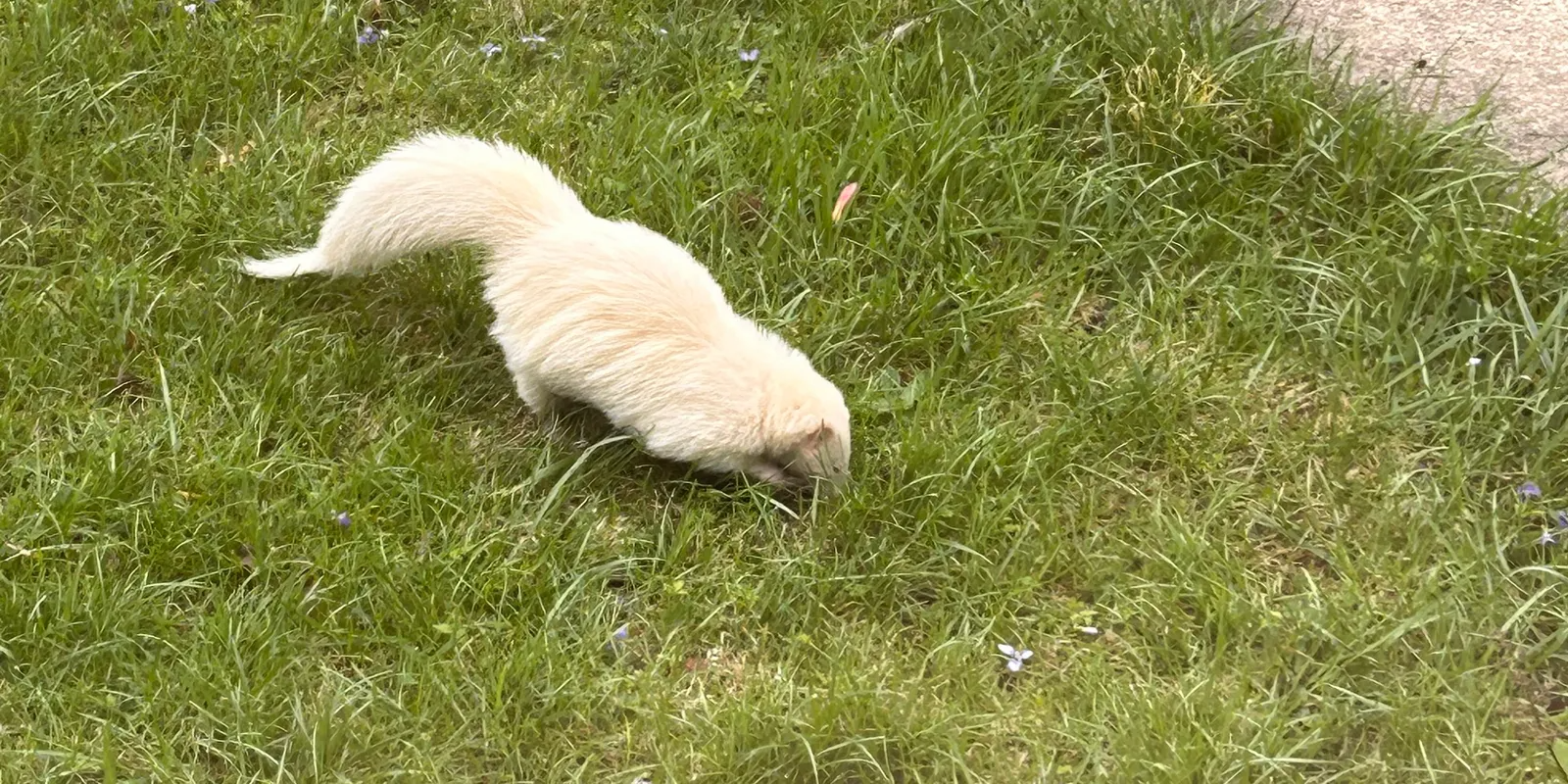Bexley resident Molly Nelson had an unexpected visitor this spring.
A small albino skunk, about as large as a house cat, sniffed and stomped its way through her yard in mid-April.
“It was like rooting around, snuffling around in the grass looking for grubs or bugs or whatever. It looked like it was looking for a meal,” Nelson said.
The little critter came and went, but not before Nelson managed to snap a few pictures and videos of it that she later shared to The Bexley Buzz Facebook group.
Her post got around 250 likes and 50 comments from locals excited to see the rare, stinky creature.
Albino skunks are “not common,” while their black and white siblings are ubiquitous, especially during the spring, ODNR Wildlife Biologist Katie Dennison said.
“The one thing with albino animals in general, a lot of times they don’t live as long as other animals or they may be more susceptible to predation because where a lot of animals rely on some sort of camouflage maybe to avoid predation, if they’re solid white, they may not be able to avoid predation as well,” she said.
“But that’s probably not as much of an issue for skunks because their main defense is chemical rather than using camouflage.”
How common is albinism in animals?
Purdue University says that an estimated 1 in 20,000 to 1 in 1 million animals are born with albinism.
Albinism is caused by a rare set of genes that prevent cells from producing melanin, the substance that gives skin, fur, hair and eyes their color, according to an article from the Iowa Department of Natural Resources.
If you see a skunk in your yard—albino or otherwise—Dennison recommends you leave the skunk alone and slowly walk away from it.
“Skunks don’t want to spray. They do it as a defense mechanism,” she said.
As for Bexley’s skunk, Nelson hasn’t seen it since but she said a friend has.

































